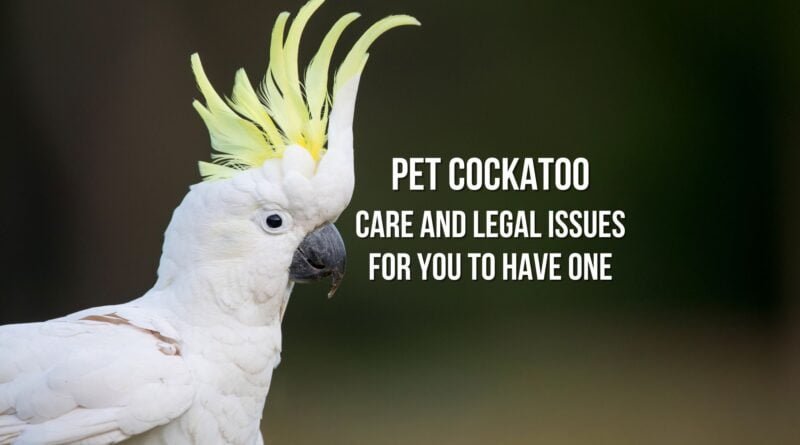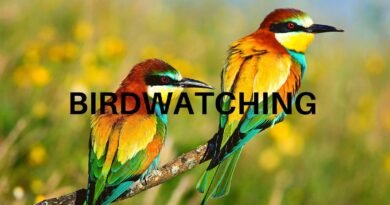Pet Cockatoo: Care and legal issues for you to have one
Are you thinking of bringing home a noisy friend to keep you company? The cockatoo might be what you’re looking for. In addition to being very beautiful, they are very cheerful, fun, and intelligent birds. With this whole package, they have won the sympathy of pet bird lovers. Let’s talk a little about the pet cockatoo. Legal issues, care, and behavior of the animal, among other things. We hope you enjoy reading and have fun!

Origin of cockatoos
Its scientific name is Cacatuidae and there are about 20 different species of cockatoo, however, the common between them is their origin. They all come from Oceania, more precisely from Australia, in its forests, and from Indonesia. That is, if you do not live in one of these countries, these birds will be considered exotic birds. So, they will possibly need a license for breeding. We’ll talk about that later.
Features of the pet cockatoo
Physical and even behavioral features may differ between the various species, but in short, they are very similar.
They have abundant and showy plumage, usually white, yellow, or pink, depending on the species. Its most striking feature is the prominent feathers on the head. This tuft or crest usually bristles when they are afraid, surprised, or during games with their owner.
Their size can also vary according to the species, measuring from 14 to 28 inches in length. They are not small birds, their weight can reach just over 30 ounces. The females of the species are slightly smaller. They are similar to parrots.
They are excellent flyers, very intelligent, and can be trained very easily. They quickly learn how to open a cage and pick up small objects, such as pens, lighters, watches, and others. You have to be careful with what you leave within their reach.
The lifespan of this pet bird is quite long: a cockatoo can live up to 75 years. That’s right! It can live longer than its owner since the human life expectancy is 71 years. It is amazing, isn’t it?!
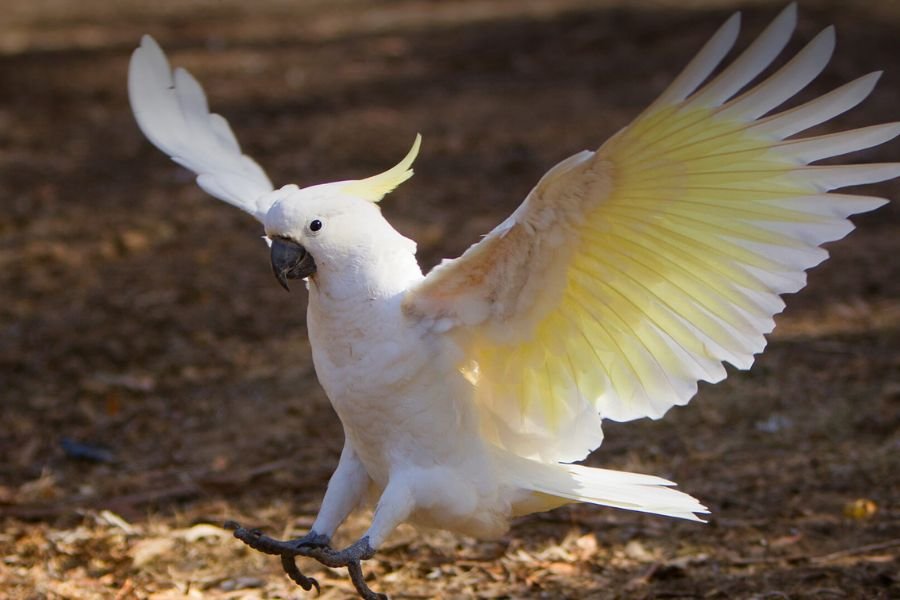
Behavior
They are very social birds. They love the interaction with their owner and love receiving affection, especially on their head. Very talkative and noisy, they repeat sounds and words that they hear frequently. However, they are not able to formulate a complete sentence, as parrots do. They are talented dancers too.
They become meek and affectionate when raised from a young age by their owners and this makes them also very dependent. The owner needs to keep this in mind before taking one home. It is necessary to have time and willingness to dedicate yourself to this bird. If they feel abandoned and forgotten, they can pluck their feathers and destroy whatever is around them: furniture, plants, and clothes. Yes, they are needy and demand attention!
As we mentioned before, depending on its mood, it moves its crest:
- Relaxed crest: it is happy and calm
- Bristly crest: it is lively and alert
- Lowered crest: a sign of submission or tension.
Gradually the owner will get to know its behavior. However, we cannot forget that, although there are features of the species, much of its attitude will be under the environment in which it lives.

Food
They are herbivorous birds and in the wild, they eat fruits, vegetables, and grains. They love to use their curved and hard beak to break tree bark. For this reason, when tamed, it is important to offer them hard grains and seeds as food.
There are specific feeds for these birds. However, do not forget to consult a veterinarian who will indicate ways to keep your friend’s diet healthy, balanced, and varied.
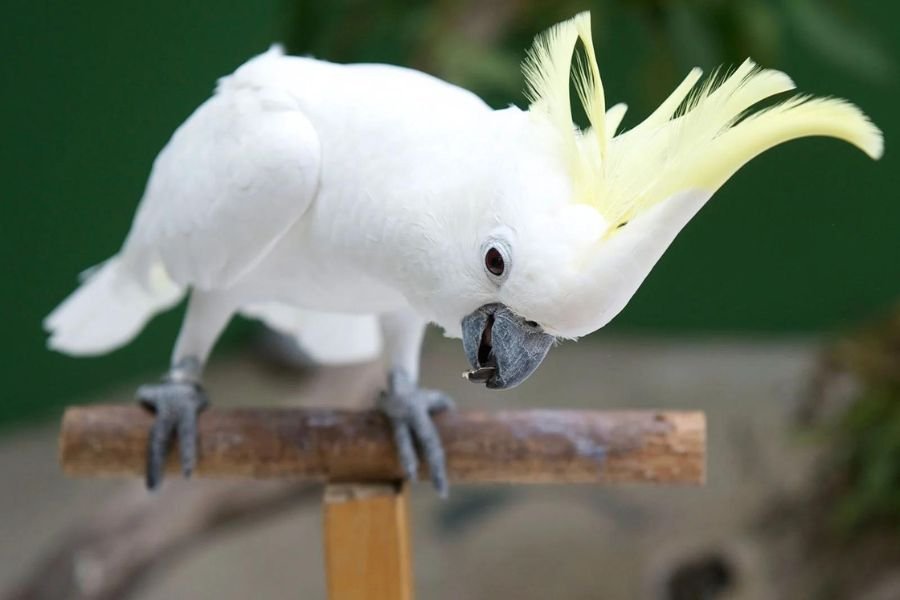
Care and environment for your pet cockatoo
As we have already mentioned, cockatoos are intelligent and playful birds and this makes them get bored easily. Therefore, the owner must provide an environment rich in activities, logically beyond human interaction. If possible, the ideal would be to have a couple of cockatoos, for one to always keep the other company.
A safe and large place, with plants and trees, is essential for your pet bird. Another point is a place where it can sleep and rest: a cage that is also large. You need to have lots of toys and offer them one or two at a time (so they don’t get bored). Pet them a lot, talk with them and believe me, they like music, so put some music on!
Do you remember that we said they are from Australia and Indonesia? That is, they are from hot places. So they must be protected from the cold, in winter. Another detail: they love to play in the water, therefore, you can leave a small pot so they can have fun whenever they want.
Regarding care, we must emphasize the importance of regular visits to the veterinarian, even if the owner does not notice any problems. Better safe than sorry, right?
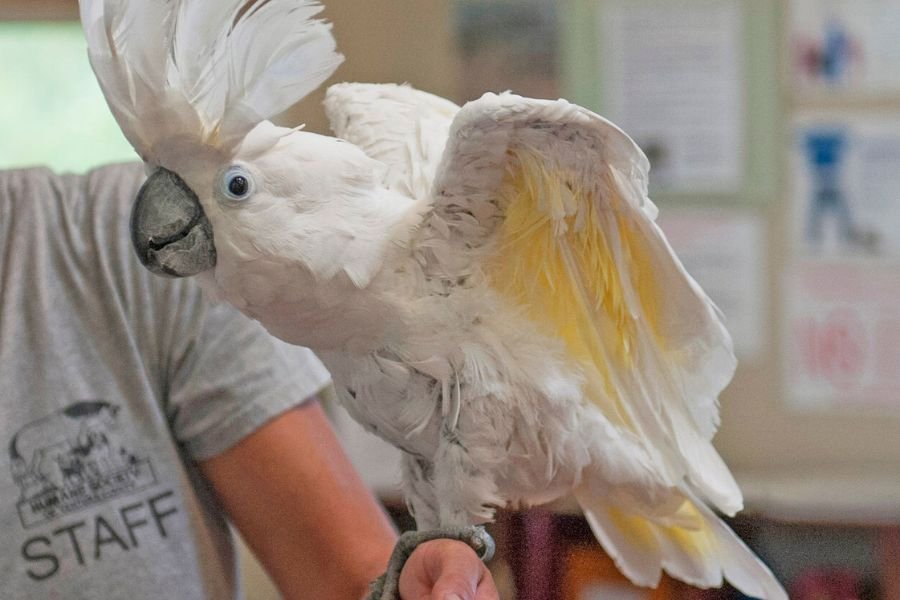
Legal issues
After knowing all this about cockatoos, the question arises: is it allowed to breed this bird at home? Yes, it is, as long as you have legal authorization.
We must emphasize the importance of doing everything within the law. The illegal trade in exotic animals and wild animals is the biggest promoter of animal trafficking, responsible for the decimation of so many species. Recalling that illegal breeders mistreat their animals. In the case of birds, a heinous practice, but common among these illegal breeders, is to pierce the birds’ eyes so that they become less skittish. Therefore, be wary of very tame birds. Demand the invoice, and observe the leg ring on the bird’s leg if it is not broken or violated. Enquire about the breeder from the region’s environmental agencies. Never take the risk of contributing to the illegal trade in animals!
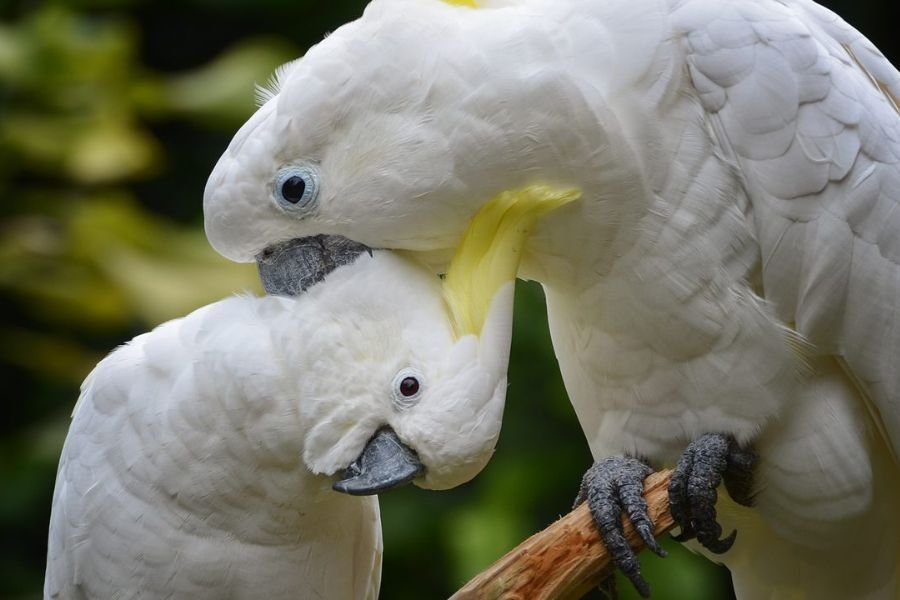
Conclusion
Always the best for wild and exotic animals is to stay in the wild, we can’t forget this! But we also cannot shut our eyes to the fact that the search for this type of pet has increasingly grown. Since there are wild and exotic animals being raised in a domestic environment, we believe it is important to offer all possible information so that they are treated well and have a happy and healthy life. Protect nature, fauna, and flora, and never buy from illegal and non-certified breeders.
Do you have any comments or remarks regarding what we talked about in this article? Share with us writing in the field below. We will love to receive and respond!
Till next time! ♥

